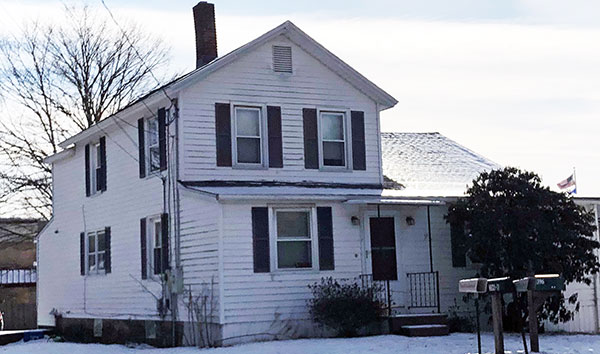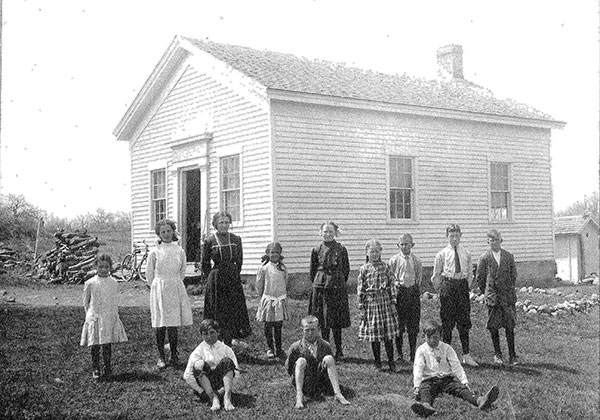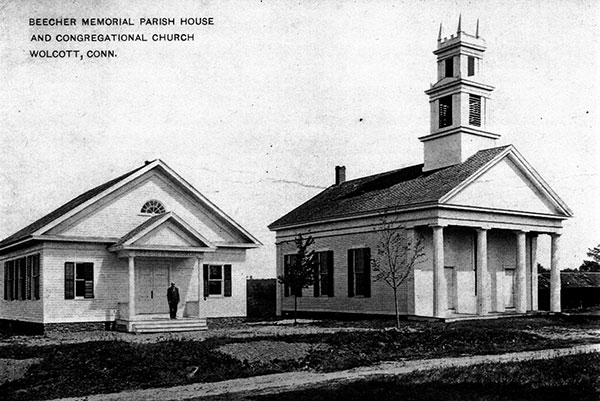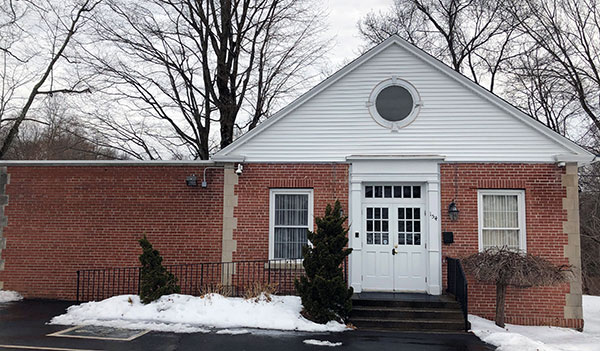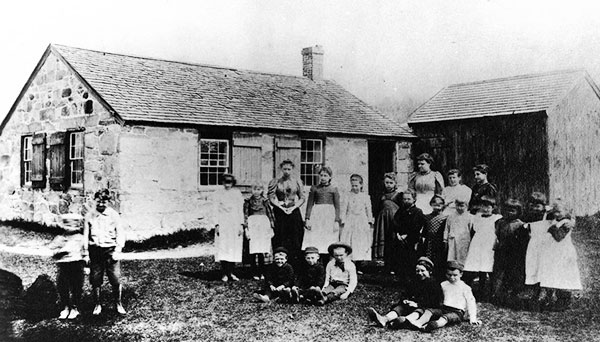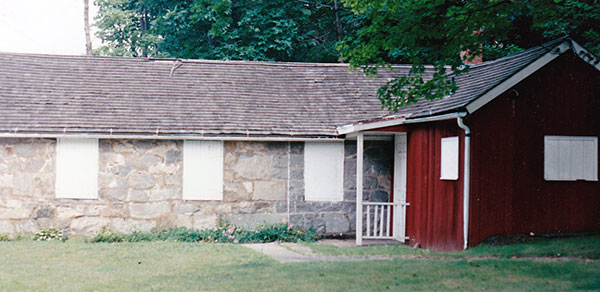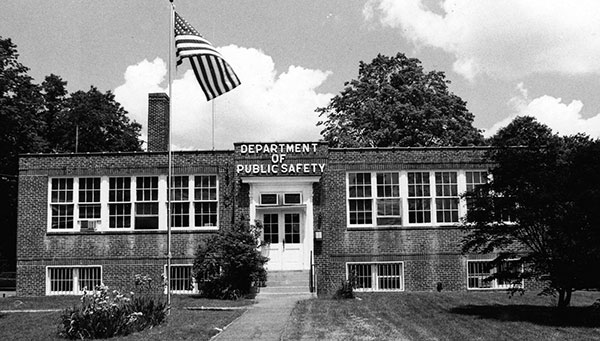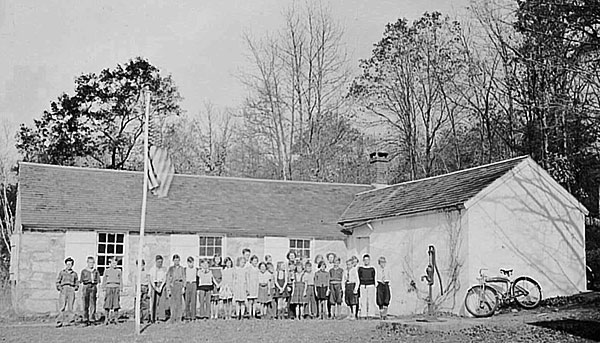|
|
||||||||||||
 |
 |
|
Wolcott Historical Society News - March 2019 By Florence Goodman This month I will take a break from my series about "Important women of Wolcott" to discuss the history of the Center School and the Wolcott Historical Society's exciting move into that building. But before I begin I must thank Thomas Detlefsen and his wife for correcting me on which house on Woodtick Road was Eva Tyrrell's. The house on the corner in 1905 is not the house on the corner today. Eva's house was the white house in front of Frisbie School at 396 Woodtick Road; I have included a picture of the correct house at the end of this article.
Recently Andrew Larson wrote an article in the Waterbury Republican-American titled "Historical Society has home". A better title might have been, "Historical Society has an additional home." That is because the 1821 Woodtick stone schoolhouse on Nichols Road has served as our museum since 1963 and will continue do so as our "school history museum." We are moving all other Wolcott artifacts into the Center School as an additional museum. The stone schoolhouse is a valuable relic in its own right and it will always be maintained and used by our Society, but it lacks adequate indoor plumbing and display space.
The Center School's location and additional space has made it a perfect spot to house Wolcott's history, not to mention that monies from the will of Addin Lewis (a wealthy native) had to be used for educational purposes. Some of those funds were originally used to build the Center School and so that building must be used for educational purposes. Another plus is that the town municipal officer, Mary Morrone has relocated there and our displays will be visible to so many more residents. We hope to have the move completed by late spring and open to the public at that time so it's only fitting that I give our second home a good introduction.
The original Center School was known as the "little red schoolhouse" built in the mid-1800s. It was a one-room structure, which included a small entry and a single classroom; fire destroyed the building and most of its contents on January 27, 1931. A week later the town leased the Beecher Memorial Hall from the Congregational Church and classes were held there until the new school was built. The town received $3000 in insurance money, but additional funds were needed to build the new structure so a town meeting was held. The March 2nd town meeting had 60 to 70 residents in attendance who voted to levy a 30-mill tax rate to include enough funds to cover the total cost of the building and all supplies to replace the Center School. The new structure consisted of one large room with seats for 40 to 50 pupils and indoor bathrooms and running water. The basement was used as a play area for students in inclement weather.
Clarence Atwood whose family settled in the town in the mid 1800s attended the new school and his recollections follow. He stated that the school served all eight grades and the teacher who usually boarded with a nearby family was hired one year at a time. In the entryway there was a bucket of fresh water on the shelf with a dipper for all students to share when a drink was needed. Also in the entryway were rows of pegs on the wall for students to hang their outerwear and to store their lunch pails. The teacher taught grade level classes in small groups and if you were an alert student you could overhear and even learn some of next grades work and of course review some of what you should have learned last year. Around midmorning students had recess, which helped to wear off some of that pent-up energy and lunch lasted one hour. Most students ate quickly in order to get outside for games. Afternoon was a repeat of the morning and school was out at 4:30 P.M. I love this quote from Clarence; "I can still remember the smell of the first day of school- newly varnished desks and a new box of crayons."
The new Center School served as a schoolhouse on the green for approximately fifteen more years until the newly built Alcott School replaced it in 1945-46. The town continued to use the building for town offices and even the police department spent some time housed in that building. In 1957 when the town hall was being renovated the library was moved to the basement of the Center School and in 1959 it moved upstairs taking over the entire building until 1970 when the present library opened. Once the library moved out of the building the town turned the building over to the Board of Education, which housed the office of the superintendent and other administrators as well as the business office. In 2018 the superintendent of schools moved his offices into the old section of Alcott School and recently the Board of Education turned the Center School back to the town, which opened up space for us to use along with our current stone schoolhouse museum.
The Old Stone Schoolhouse was the earliest school in the Southwest District and believed to be the oldest stone schoolhouse in Connecticut. The original wooden structure was destroyed by fire and in 1821, a new stone structure was built. The stone for this building was quarried from the Wakelee Quarry located near the Waterbury line. The length of the building was extended for more room in 1898. This Woodtick schoolhouse was used to educate the children who lived in the southwest section of town for 109 continuous years.
In 1930 the town voted to replace the old stone school with a new two-room brick school building called Woodtick School for a cost of $14,799. In later years the two-room Woodtick School was turned over to the Public Safety Department and later demolished to make room for the current structure.
The old stone schoolhouse was sold in 1931 to Miss Emily Morris. In 1934 Miss Morris donated the school to the Mattatuck Historical Society of Waterbury because she wanted it to be a memorial to her mother Eugenia Laura Tuttle Morris and her maternal grandfather Lucius Tuttle who had taught in the school in 1829. In 1942 the town had to lease the building and reopen it for several years to take care of the overflow from the new Woodtick School. Later the building was vandalized and the plan by the Waterbury Historical Society to restore it was too costly so some changes were made to allow for living quarters for a caretaker.
In 1962 the school was turned over to the newly formed Wolcott Historical Society. The museum was opened in 1963 and thus has served as such for fifty plus years. In 1978, Mr. John Washburne applied for historic status for the building, but it wasn't until 1982 that it was placed on the National Register of Historic Places.
As I mentioned above the Stone Schoolhouse Museum will now serve as our museum of school history. We will set up a section to resemble an early 19th century school and the other half will contain displays of school artifacts and documents. The Wolcott Historical Society looks forward to showcasing both buildings by summer.
(Information for this article was taken from: a phone call from Thomas Detlefsen concerning the home of Eva Tyrrell; Wolcott News articles written by Flo Goodman on 7-30-08, 9-30-11, 5-15-14 and 10-15-15; Waterbury Republican-American articles 1-28-1931 and 3-11-1931 and 1931 Annual Report and The Sunday Republican Magazine 9-29-1963)
Eva Tyrrell's house was in front of Frisbie School at 396 Woodtick Road.
Students posing in front of the original Center School.
The town leased the Beecher Memorial Parish House from the Congregational Church until the new school was built.
The second Center School built in 1931.
The stone schoolhouse on Nichols Road prior to 1898.
The stone schoolhouse on Nichols Road after it was used as a residence.
In 1930 the town voted to replace the old stone school with the new two-room brick Woodtick School. It was later used as the Public Safety Department.
A picture of the stone schoolhouse on Nichols Road prior to 1931.
To view past installments of the Historical Society News, click here. |
|
|
[Home]
[News]
[Purpose]
[Calendar]
[Museum]
[Membership]
[History]
[Contacts]
[Links]
All material at Wolcott Historical Society Web sites Copyright © 2000-2019 Wolcott Historical Society |
